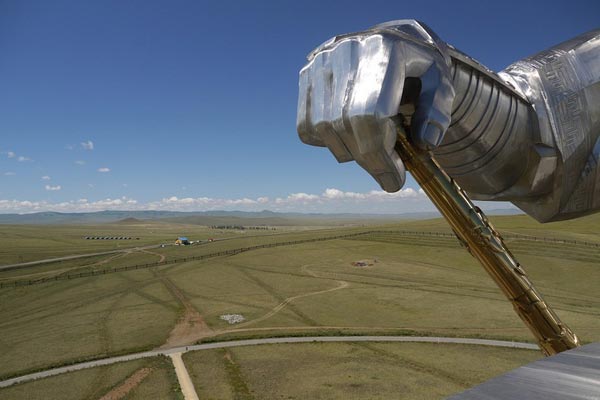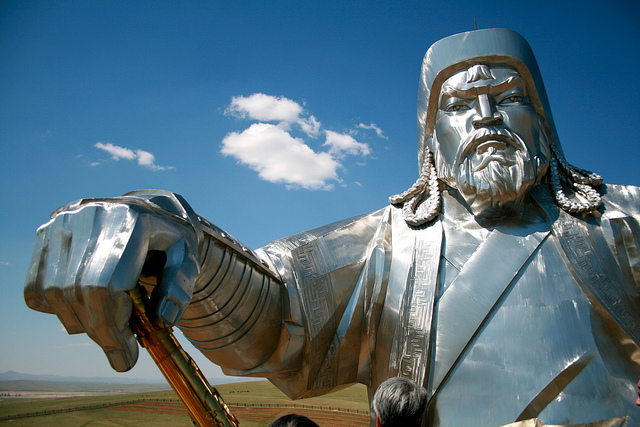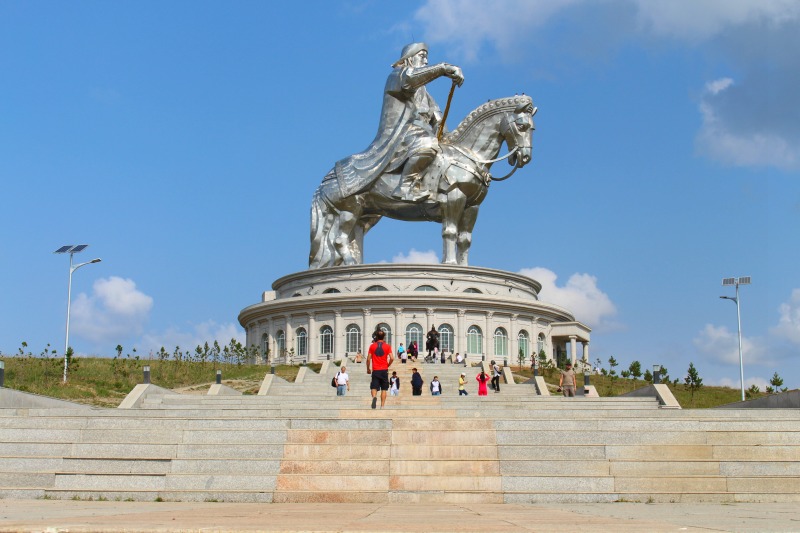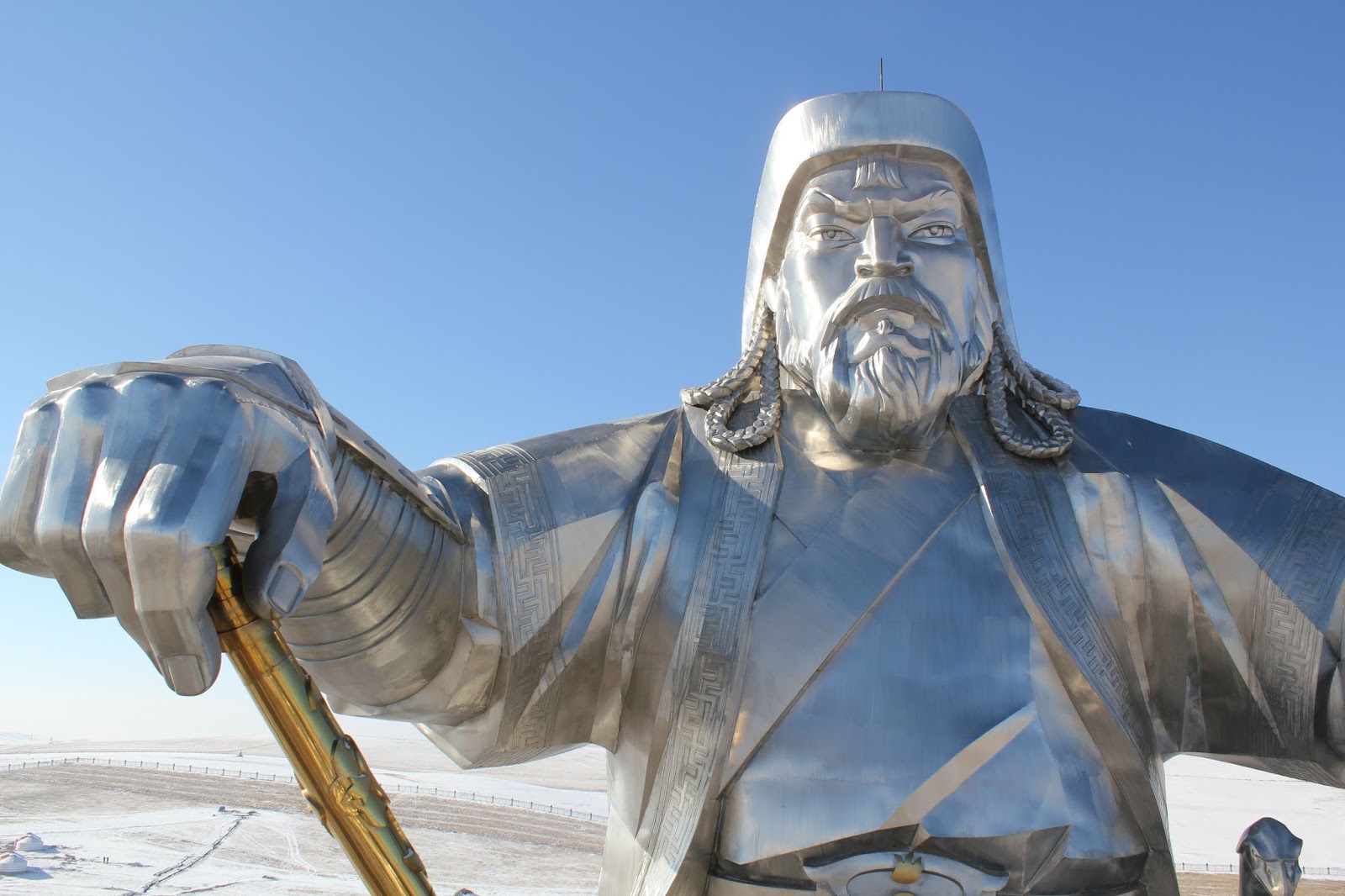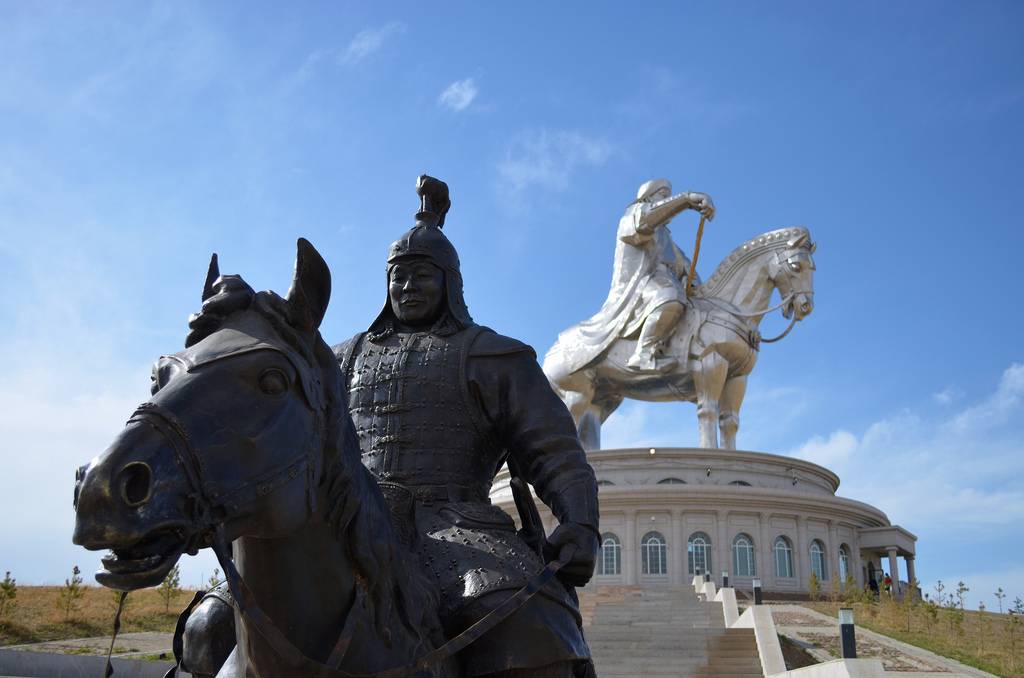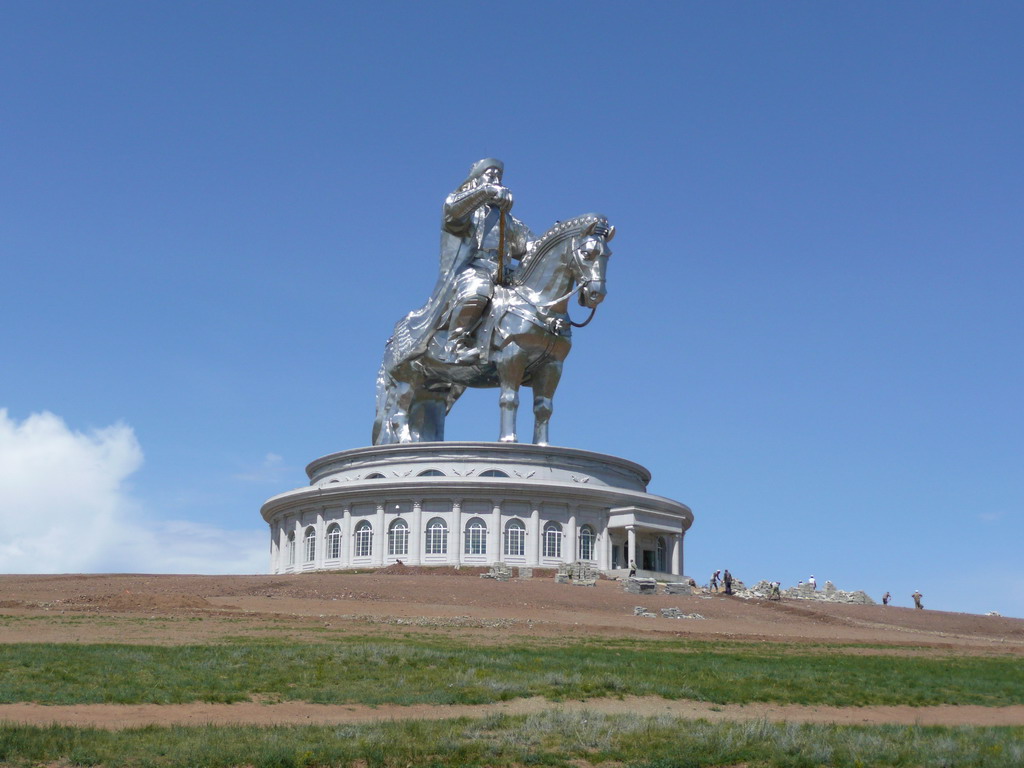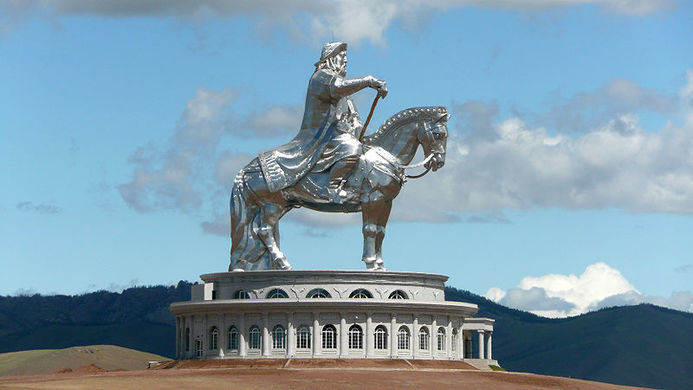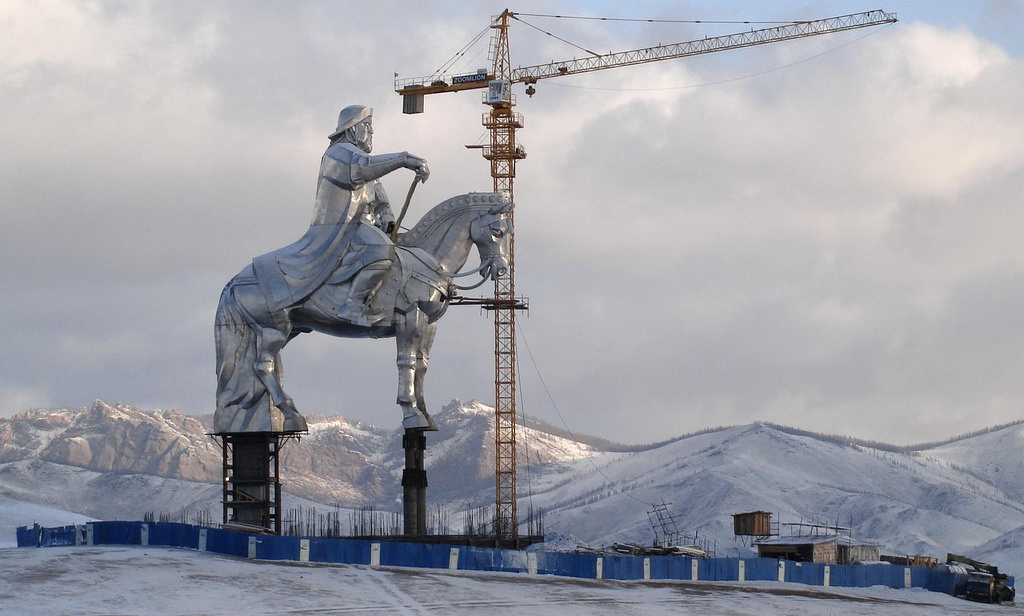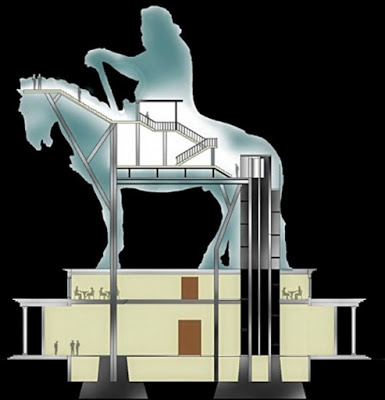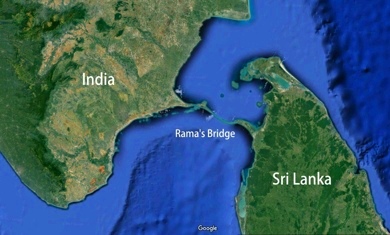The Genghis Khan Equestrian Statue in Ulaanbataar, Mongolia
- The equestrian statue of Genghis Khan was built in 2008 on the occasion of the eight-hundredth anniversary of the foundation of the Mongolian Empire, in honour of its founder, Genghis Khan.
- This huge stainless steel statue weighs 250 tons and is 40 metres (131 feet) high ; it's the highest statue representing a man on a horseback in the world.
- It's located 54 kilometres (33,55 miles) from Ulan Bator, on the banks of the Tuul River, in the place called Tsonjin Boldog.
- You can easily visit it when you visit Gorkhi Terelj National Park.
Genghis Khan Equestrian Statue in Mongolia

To the outside world, Genghis Khan, the fearsome Mongolian warrior who conquered half the known world in the 13th century, is remembered for his brutalities and destruction that he brought upon the conquered regions resulting in the death of forty million people. But to Mongolians, he is a national hero, a larger-than-life figure and the symbol of Mongolian culture, and for good reasons. Genghis Khan founded the Mongol Empire, which became the largest contiguous empire in history, revived the Silk Road, uniting warring tribes and was responsible for cementing the position of Mongols in the world’s map.
Ulaanbaatar is the capital of Mongolia. It’s in the Tuul River valley, bordering the Bogd Khan Uul National Park. Originally a nomadic Buddhist center, it became a permanent site in the 18th century. Soviet control in the 20th century led to a religious purge. Soviet-era buildings, museums within surviving monasteries, and a vibrant conjunction of traditional and 21st-century lifestyles typify the modern city.
Legend Genghis Khan is told to have found in Tsonjin Boldog a golden horsewhip.
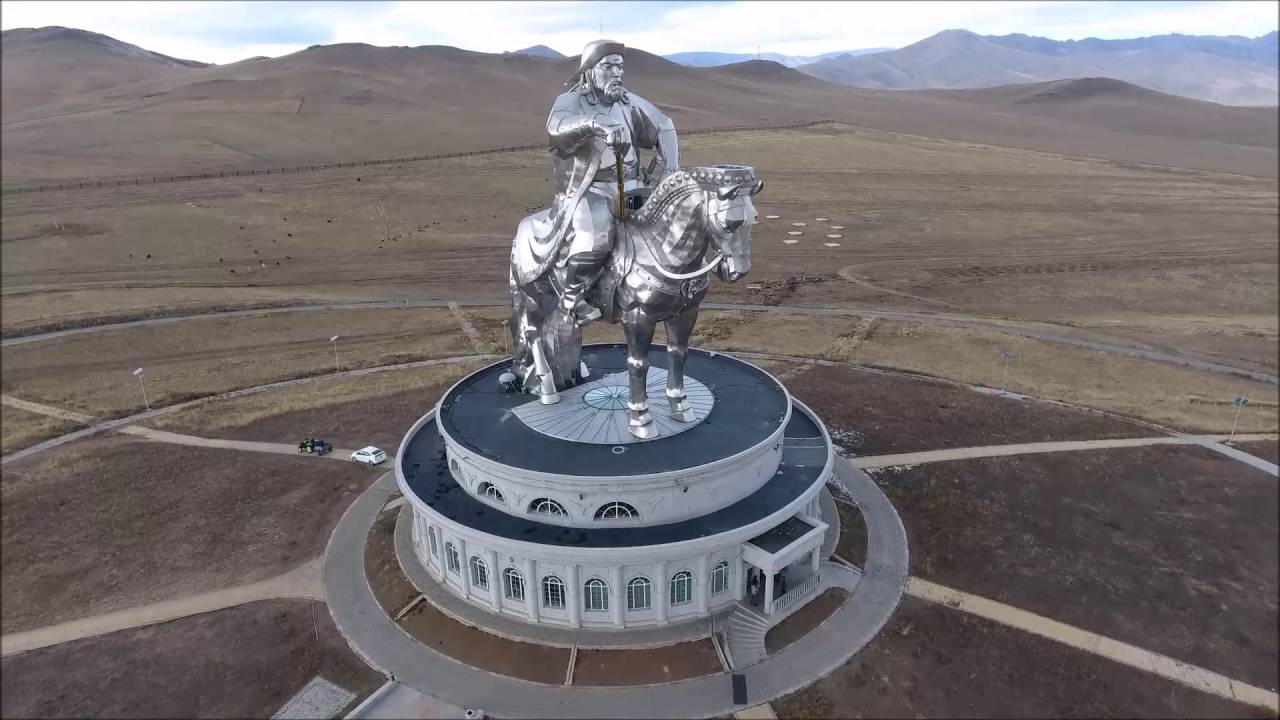
The statue is turned towards East, towards the conqueror's place of birth. It stands on a 10-metres high base that is surrounded by 36 columns representing the 36 kings Mongolia experienced during its history, from the first one, Genghis Khan, to the last one, Ligden Khan. The statue was made by the sculptor D. Erdenebileg and the architect J. Enkhjargal, and costed 4,2 millions of dollars.
The Chinggis Khan Statue is currently the biggest equestrian statue in the world.
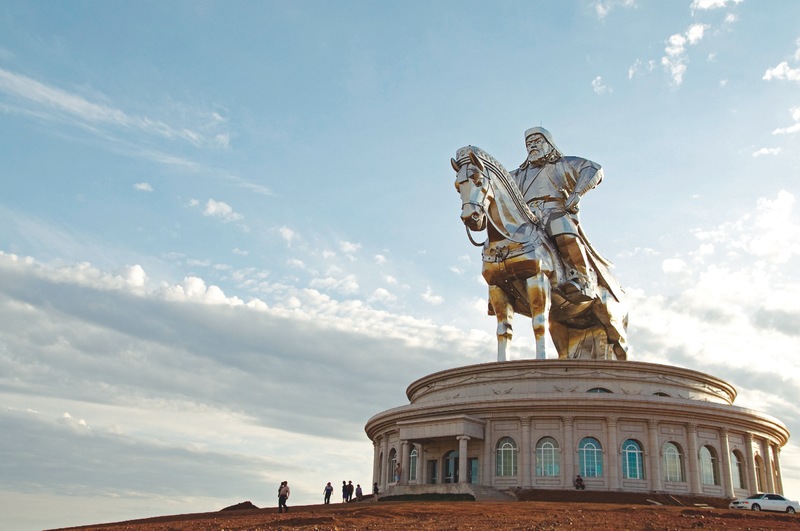
After Mongolia overthrew communist rule more than 20 years ago, there appeared a slew of monuments and products celebrating the famous personage known locally as Chinggis Khaan. Mongolia's main international airport in Ulaanbaatar is named Chinggis Khaan International Airport, students attend Chinggis Khaan University and tourists can stay at the Chinggis Khaan Hotel. His face can be found on everyday commodities, from liquor bottles to candy products, and on bank notes.
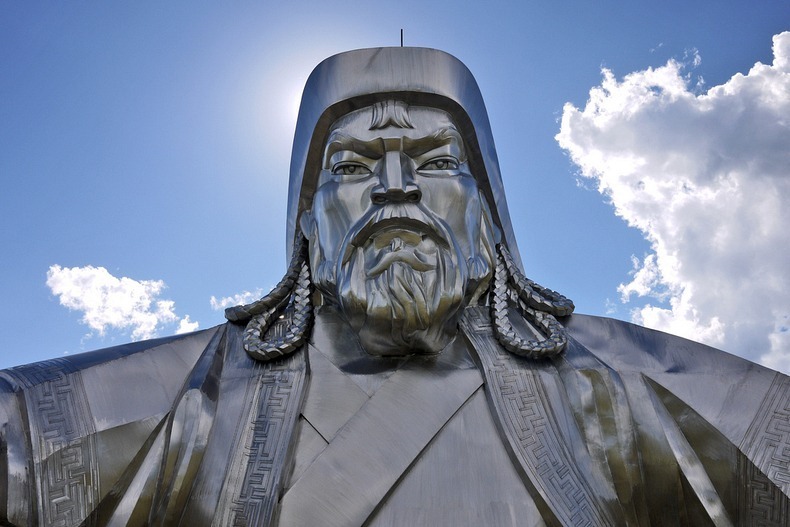
In 2008, a gigantic statue of Genghis Khan riding on horseback was erected on the bank of the Tuul River at Tsonjin Boldog, 54 km east of the Mongolian capital Ulaanbaatar, where according to legend, he found a golden whip. The statue is 40 meters tall and wrapped in 250 tons of gleaming stainless steel. It stands on top of the Genghis Khan Statue Complex, a visitor center that itself is 10 meters tall, with 36 columns representing the 36 khans from Genghis to Ligdan Khan. The statue is symbolically pointed east towards his birthplace.

Inside the two-story base of the statue, visitors can see a replica of Genghis Khan’s legendary golden whip, sample traditional cuisine of horse meat and potatoes, or play billiards. Visitors can ascend to the exhibition hall using an elevator at the back of the horse and then walk to the horse’s head passing through its chest and the back of its neck from where they can have an excellent panoramic view over the complex area and the scenery beyond.
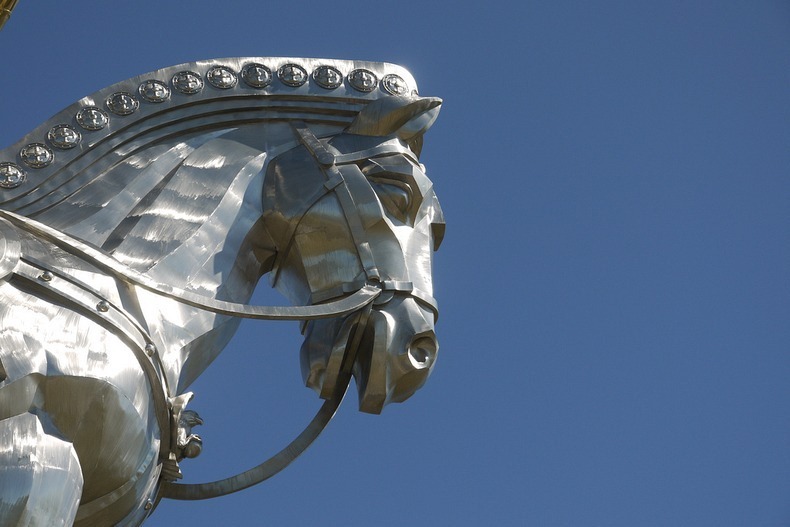
Site Visit:
Visitors can go inside the statue, and from the inside of the horse's head, they have a panoramic view of the surroundings and reconstituted Mongolian village.
The site also has a museum that shows an exhibition about the Bronze Age and the archaeological culture of the Xiongnus in Mongolia. The visitor will discover usual utensils, belt buckles, knives, sacred animals, etc.
The second exhibition covers the period of the 13th and 14th centuries, when the Mongolian Empire was at its height, with tools, goldsmith subjects, crosses, and rosaries.
